Introduction
My backcountry layering system has evolved through the years. I’ve replaced wicking garments with hydrophobic garments, I place a high value on air-permeable fabrics, and I prefer to spend a little extra weight on ventilation. My goal with these choices is to assemble layering systems for inclement conditions that allow me to stay comfortable. For me, comfort is most challenging in the blustery conditions I experience where I hike the most – the Rocky Mountains of Colorado and Wyoming.
In this article, I discuss some of the challenges that an effective layering system needs to address. I also highlight a handful of the layers that I use the most and how I combine them into various ensembles for different use cases.
The Issues

Thermal comfort
During physical activity, your body generates heat. In addition, heat is absorbed by your clothing when you are exposed to warm temperatures and direct sunlight. That heat must leave your clothing system in order for you to remain comfortable.
Likewise, during periods of inactivity in cold temperatures, heat loss can make you uncomfortable. Heat loss to the environment is exacerbated in wet conditions (evaporative heat loss), windy conditions (convective heat loss), and when exposed to a clear night sky (radiative heat loss).
The movement of heat from inside your clothing system to the outside environment is critical for maintaining thermal comfort. Heat moves through a clothing system in response to convection (air movement in the system), conduction (the transfer of heat along fabric surfaces from warmer to cooler temperatures), and radiation (e.g., heat loss to an open night sky or heat absorbed from an open sunny sky).
Moisture accumulation
During activity, your body generates moisture in both vapor and liquid (sweat) phases. The movement of sweat from your skin surface to the environment occurs in response to complex processes that involve evaporation, condensation, and capillary movement along fiber surfaces (wicking). Likewise, the movement of moisture vapor through your clothing occurs in response to convection, diffusion, and vapor pressure differentials.
The extent to which moisture accumulates in your clothing will depend on the hydrophobicity (or hydrophilicity) of fiber surfaces, capillary forces within the fabric structure, fabric porosity, air permeability, diffusion (breathability) resistance, and mechanical ventilation features.
Storm protection
Protection from wind and precipitation requires tightly-woven fabrics (for wind resistance) and waterproof coatings, membranes, or laminates (for waterproofing). The fabric physical characteristics that are required for keeping Mother Nature’s elements out also keep your elements (the heat and moisture generated during activity) in.
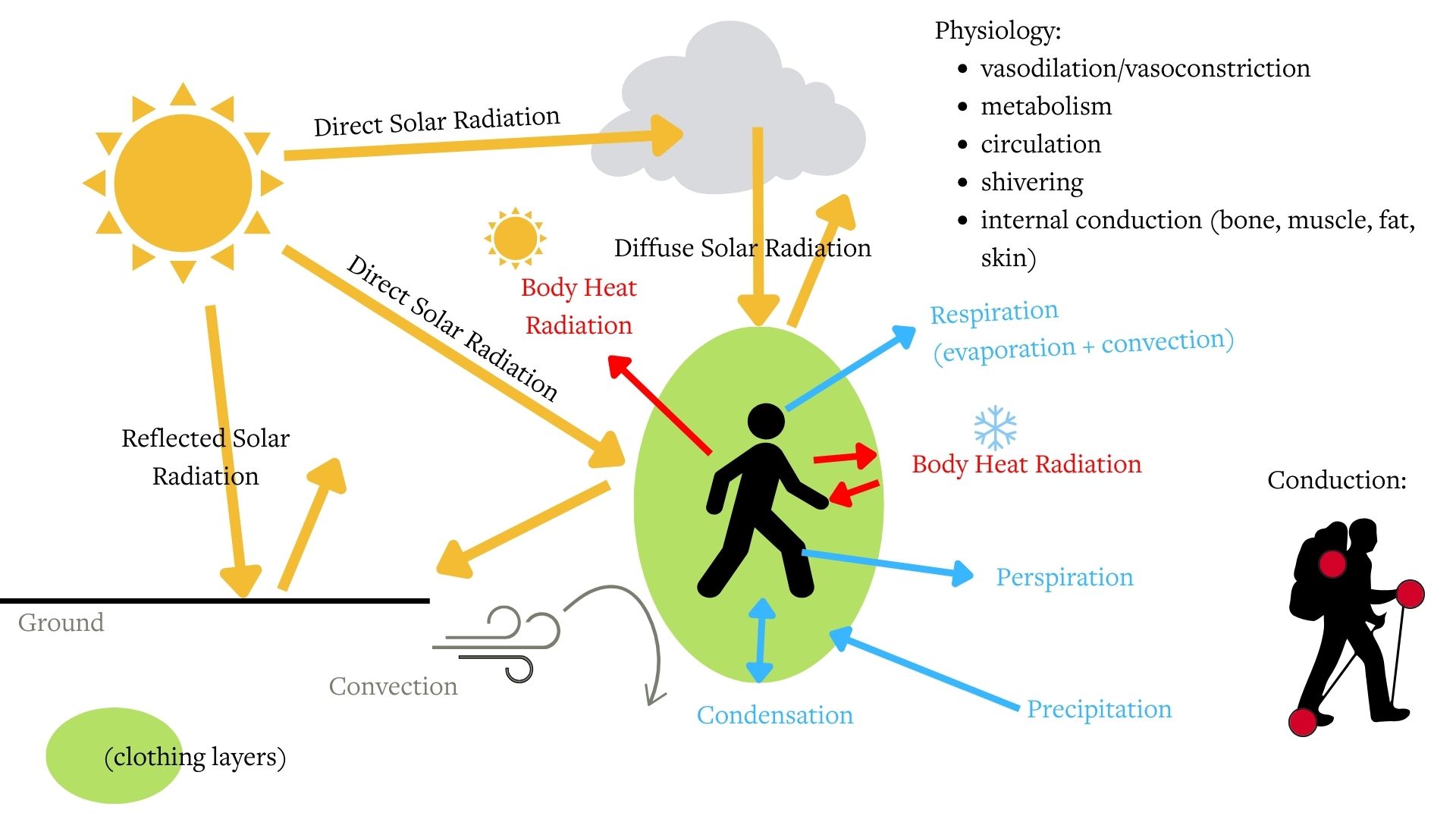
Sun exposure
In Managing Sun Exposure in the Backcountry, we study how fabric materials and engineering influence clothing’s resistance to the penetration of ultraviolet radiation from the sun. Because I live at and spend most of my trail time at altitudes in excess of 8,000 feet (2,440 m), I’m attentive to the amount of cumulative sun exposure I get. My normal summer hiking uniform includes a long-sleeved shirt, brimmed hat, neck gaiter, sun gloves, and long pants.
There’s an inverse relationship between sun protection and thermal comfort. The tightly woven fabrics that prevent the penetration of ultraviolet rays also inhibit the movement of heat and moisture.
Biting insects
High-thread-count (tight weave) woven fabrics are more resistant to puncture from a mosquito’s proboscis than knitted fabrics. However, knitted fabrics are generally more air-permeable and more comfortable to wear in warm conditions.
As with sun protection, there’s an inverse relationship between biting insect protection and thermal comfort.
Scrambling & Bushwhacking
Most thru-hikers and other trail followers don’t often have to consider the impacts of traipsing through brush or scrambling on rocks. Both of these activities can abrade, puncture, and tear clothing. Clothing that is most resistant to damage (more durable) will be made with higher-denier fibers and tightly woven. Of course, those factors interfere with the clothing’s ability to facilitate the exchange of heat and moisture and your ability to remain comfortable during activity and warmer temperatures.
My Strategy
I tend to gravitate towards layers that are more hydrophobic, dry faster, are more air permeable, better ventilated, and have high insulation-to-weight ratios.
Hydrophobicity
In Do Moisture-Wicking Fabrics Work? and Why is My Base Layer Soaked? Stephen Seeber explored the relationship between fabric hydrophobicity, wicking, and moisture movement in base layer apparel. One of the conclusions from his testing:
“The most critical element of a wicking fabric is how well it allows sweat to be drawn away from the skin, converted to moisture vapor, and then transferred out of any clothing layers. This element is different from how well the fabric itself wicks. How well the fabric wicks does not determine whether you will be comfortable. The disposition of sweat to the environment depends on much more than whether a wicking fabric can absorb lots of moisture in a laboratory test.” – Stephen Seeber [source]
The data from these studies suggest that wicking per se (the capillary movement of liquid moisture along a fabric surface) may actually increase moisture accumulation and hinder moisture transfer out of your apparel system. Of course, it will depend on the breathability, air permeability, and ventilation features of other garments in your clothing system as well.
However, this work suggests that more hydrophobic base layer fabrics may not only absorb less moisture and dry faster, but their notable lack of wicking may also contribute to more comfort and more rapid expulsion of moisture from your clothing system.
My preferred base layers are made with polypropylene, a hydrophobic fiber, rather than polyester, which is more hydrophilic. Because most insulating mid-layers are made with polyester, I look for open-weave fleeces (e.g., Polartec Alpha), which don’t promote wicking to the extent that more tightly woven or knitted fabrics do.
Rapid dry time
Garments that are thin, light, and made with hydrophobic fibers will absorb less moisture and dry faster than garments made with fabrics that are thicker, heavier, and made with hydrophilic fibers. Rapid dry time is an attribute that can be correlated to moisture transfer out of a clothing system. In addition, rapid dry time may be valuable for users who risk water immersion (e.g., packrafting, river crossing).
My fastest-drying garments are fishnet, open-weave fleece, and shell fabrics made with 7 to 15 denier fibers.
Air permeability
Air permeability contributes to the evacuation of moisture vapor from a clothing system by allowing the vapor pressure gradient on either side of the fabric to create convective (moisture-laden) air movement across the fabric surface. I prefer wind shirts and rain jackets that are at the higher end of the air permeability spectrum in those product categories.
Likewise, the three base and insulating layers I own and use regularly (Brynje fishnet, Finetrack polyester mesh, and Polartec Alpha) are highly air-permeable and facilitate convective moisture vapor movement through clothing without having to rely on wicking.
Ventilation
Mechanical ventilation has been discussed in depth previously and is a critical feature of outer shell layers. Ventilation promotes the exchange of large volumes of warm, moist air inside a clothing system with the cooler, drier air of the outside environment. Ventilation, air permeability, and breathability (the diffusion of moisture vapor through a fabric) are all important processes involved in evacuating heat and moisture from a clothing system. However, ventilation has the ability to move the most amounts of warm, moist air in the least amount of time. I’m a big fan of mechanical ventilation features – pit zips, full-length zippers, and adjustable cuffs/hem/hoods – on shell layers.
Insulation
When it comes to insulation for active use (while I’m hiking), I want insulation that has a high warmth-to-weight ratio but is highly air permeable so it’s capable of allowing heat and moisture to escape rapidly when I open vents on an outer shell layer. For insulation while inactive (at rest or in camp), I look for insulations and garments that maximize loft-to-weight ratio and that use shell and lining fabrics that are as light as possible.
My Layers
Trekking Shirts
- Patagonia Long Sleeve Sun Stretch Shirt – polyester, tight weave, resistant to biting insects, not very air permeable.
- Jolly Gear Triple Crown Button Down Hoody – polyester, stretch, less resistant to biting insects, more comfortable in warm temperatures.
Base Layers
- Brynje Super-Thermo C-Shirt – minimalist polypropylene base layer for cool and cold conditions or warmer temperatures under an air-permeable shirt or shell, very light, rapid dry time, maximum air permeability.
- Finetrack Elemental L1 Long Sleeve Crew – polyester mesh base layer, very light and thin, very air permeable, hydrophobic, rapid dry time.
- Helly Hansen LIFA Long Sleeve Crew – polypropylene base layer, less air permeable, hydrophobic, light, rapid dry time.
Insulating Layers
- Senchi Designs Alpha 60 Hoody – active use, ultralight, air permeable, hydrophobic Polartec Alpha.
- Farpointe Alpha Cruiser Hoody – active use, ultralight, air permeable, hydrophobic Polartec Alpha, more consistent inventory.
- Enlightened Equipment Torrid Apex Hooded Jacket – inactive use in cool / wet weather, synthetic high loft insulation, 7d fabrics, not air permeable, high warmth-to-weight ratio.
- Feathered Friends EOS Down Hooded Jacket – inactive use in cool / dry weather, high fill power down insulation, not air permeable, higher warmth-to-weight ratio than synthetic high loft insulation.
Shell Layers
- REI Flash Jacket – full zip, hooded, pockets, air permeable, adjustable hem and hood.
- Gorewear R7 Shakedry Jacket – two-way front zipper, very high breathability, exposed waterproof membrane = no DWR required but subject to abrasion damage.
- Montbell Versalite Jacket – pit zips, ultralight fabrics, high breathability, somewhat fragile.
My Ensembles
Here are some examples of how I combine various layers for different use cases in three-season conditions.
1. Sunshine, warm temperatures, biting insects
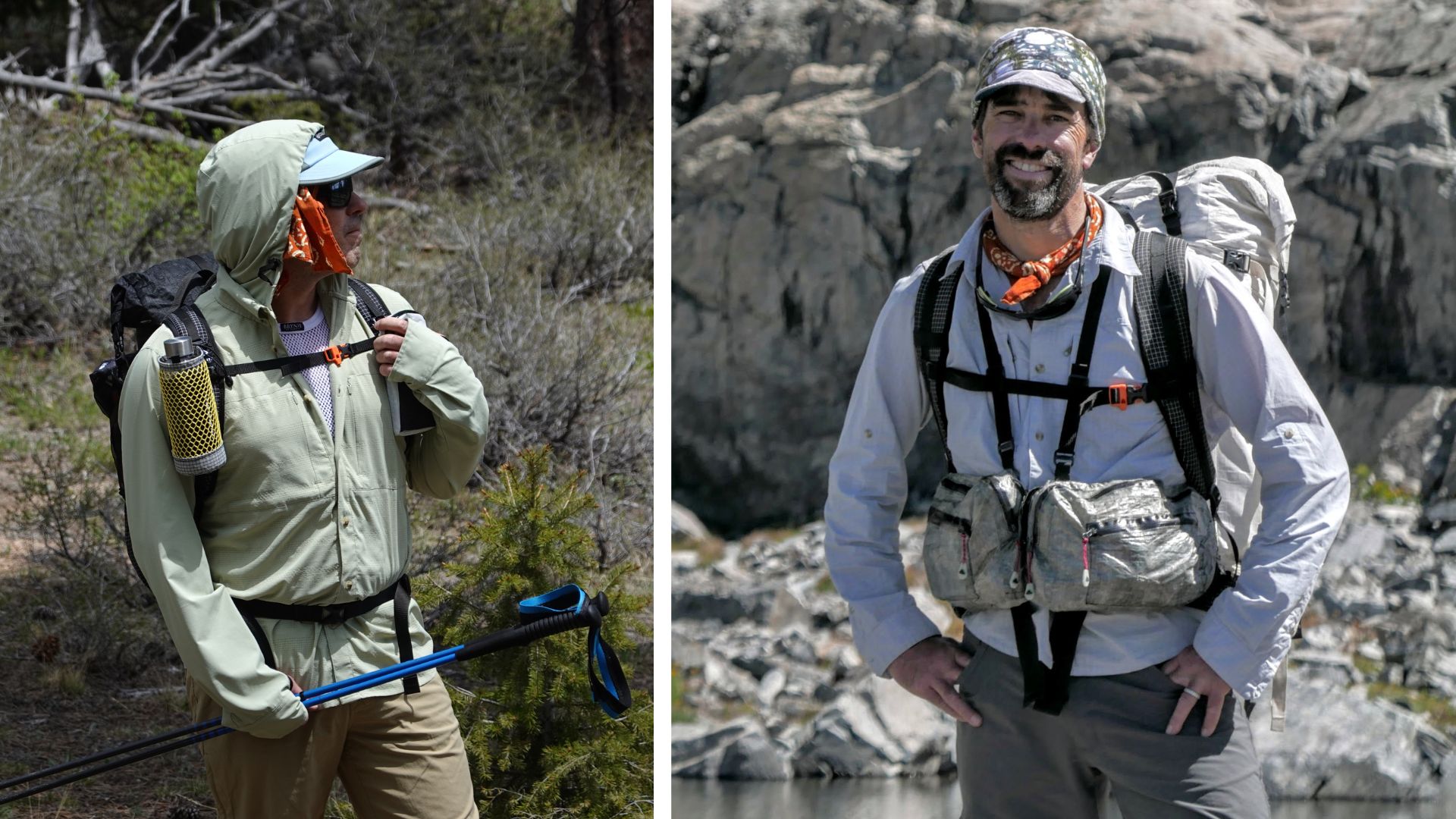
2. Cooler temperatures, no wind or precipitation, no biting insects
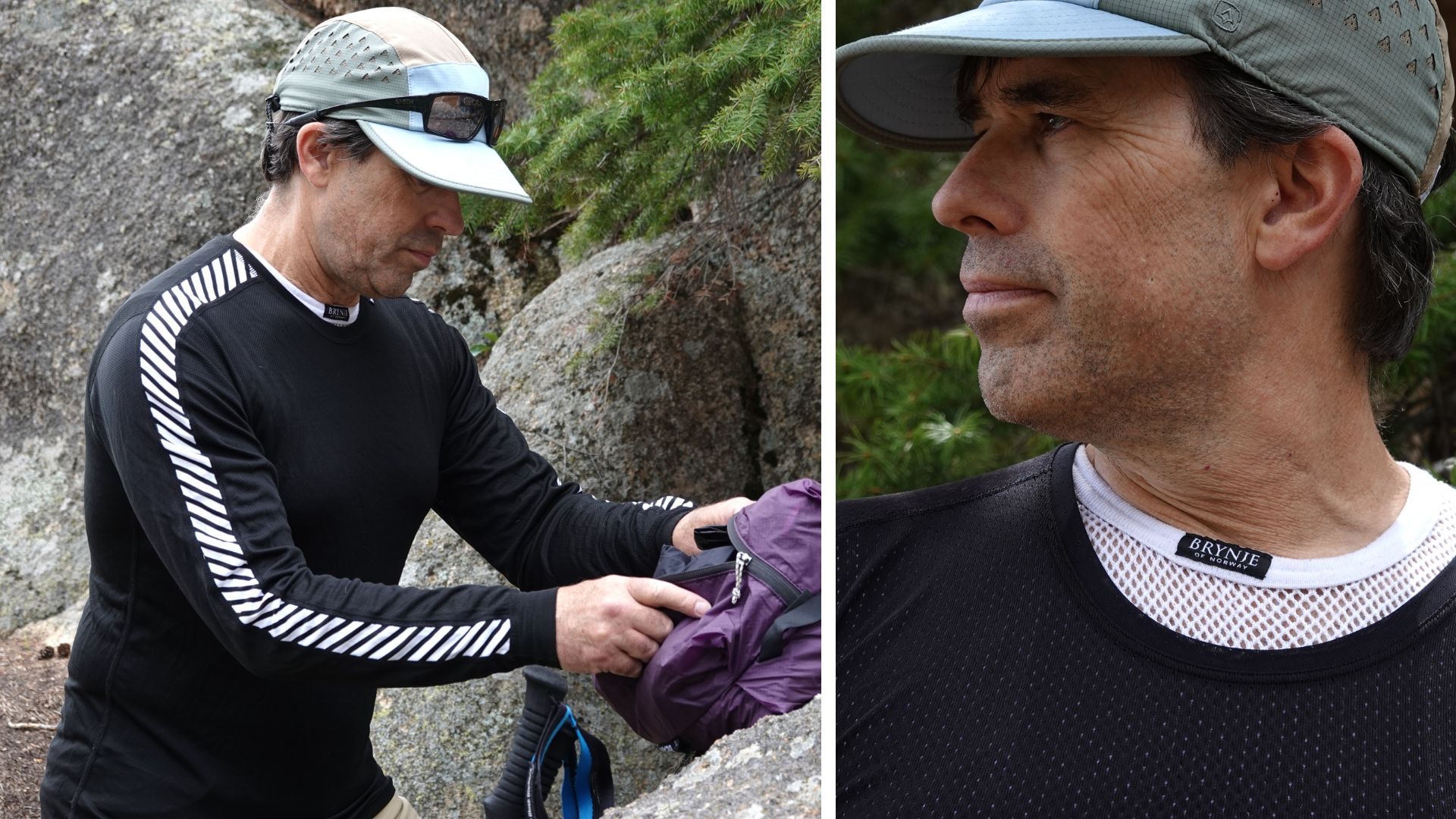
3. Warmer temperatures with wind or precipitation
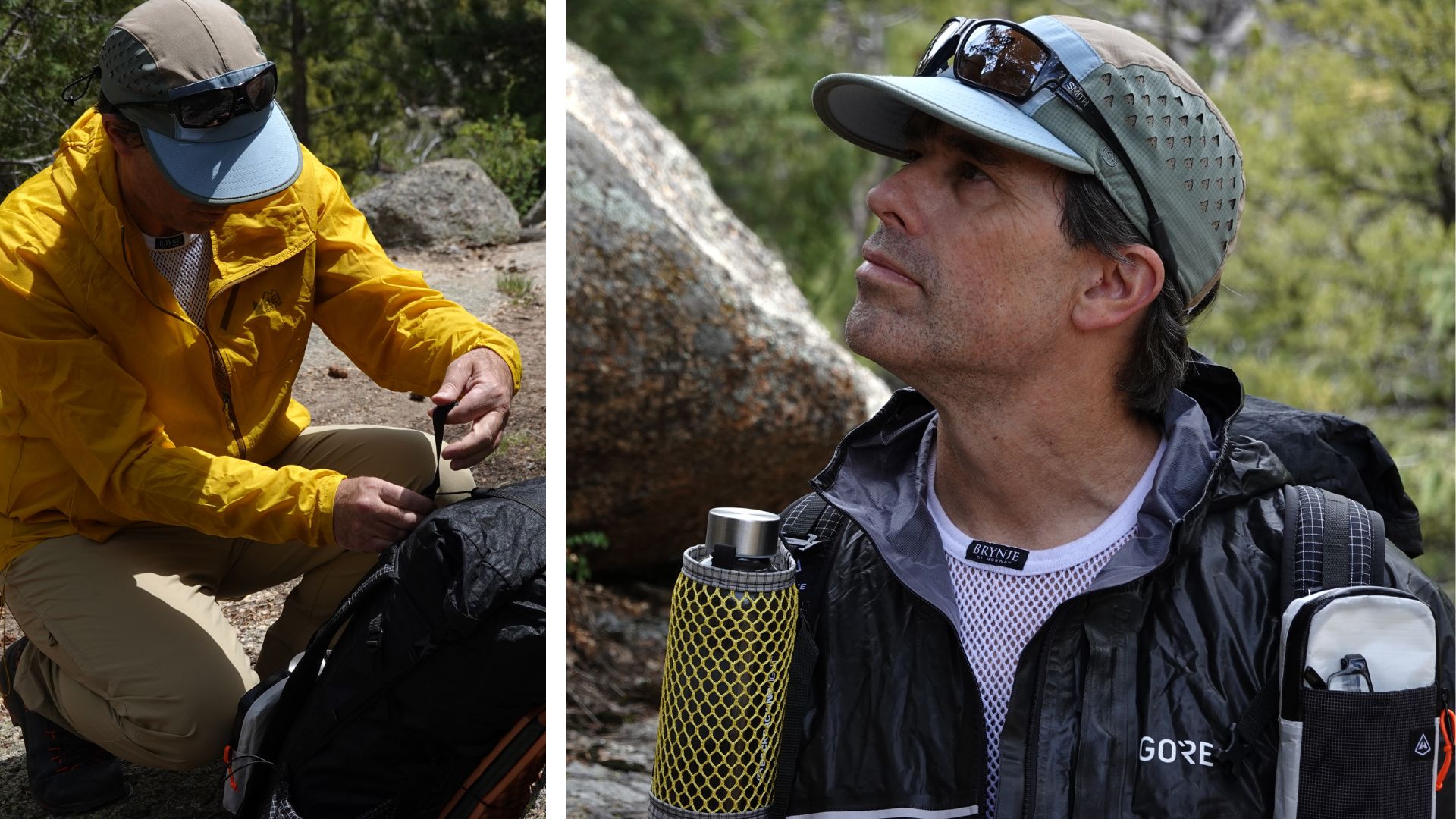
4. Heavy rain, strong winds, warmer temperatures
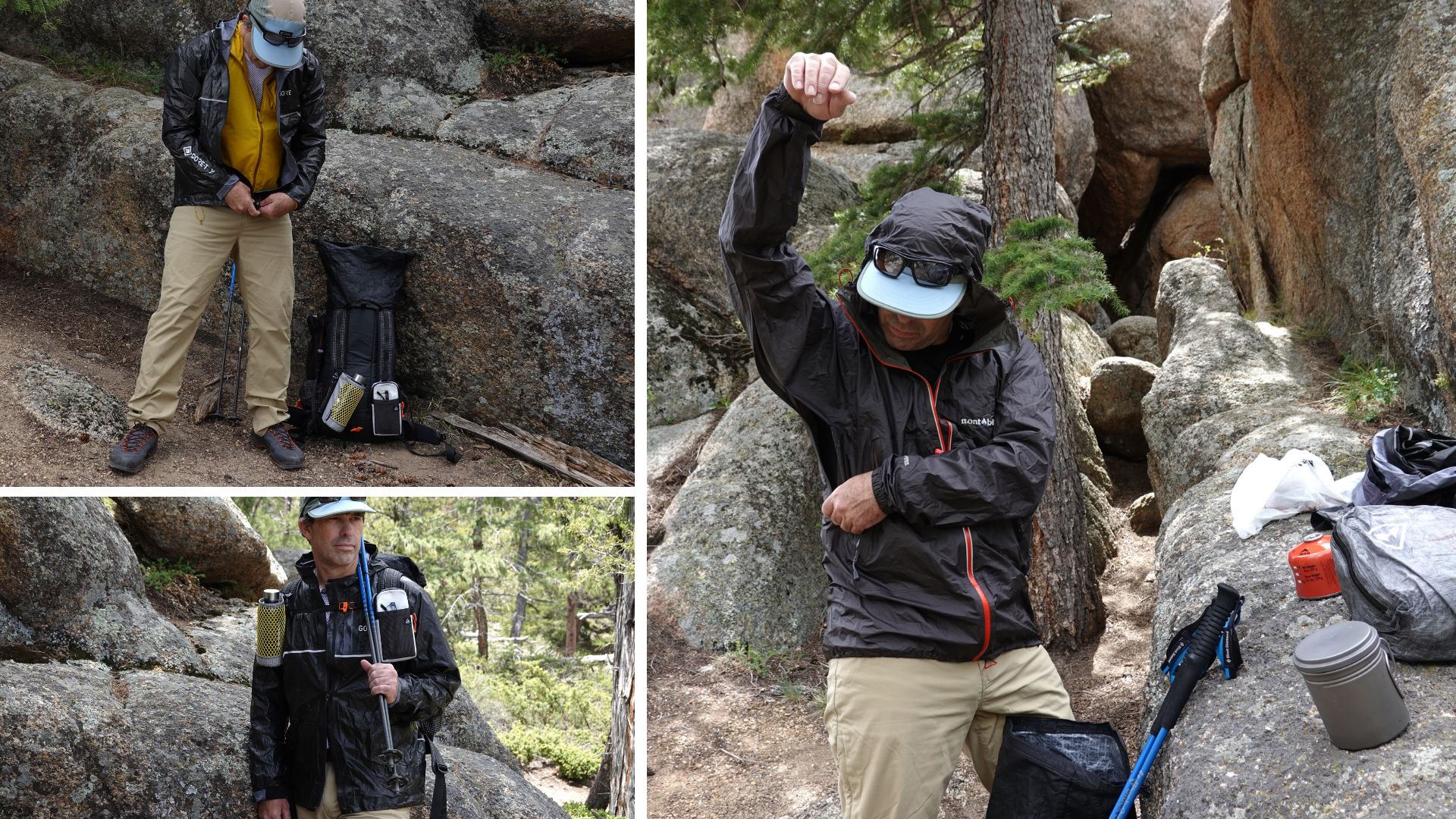
5. Cooler temperatures (no wind/rain, wind only, wind + rain)
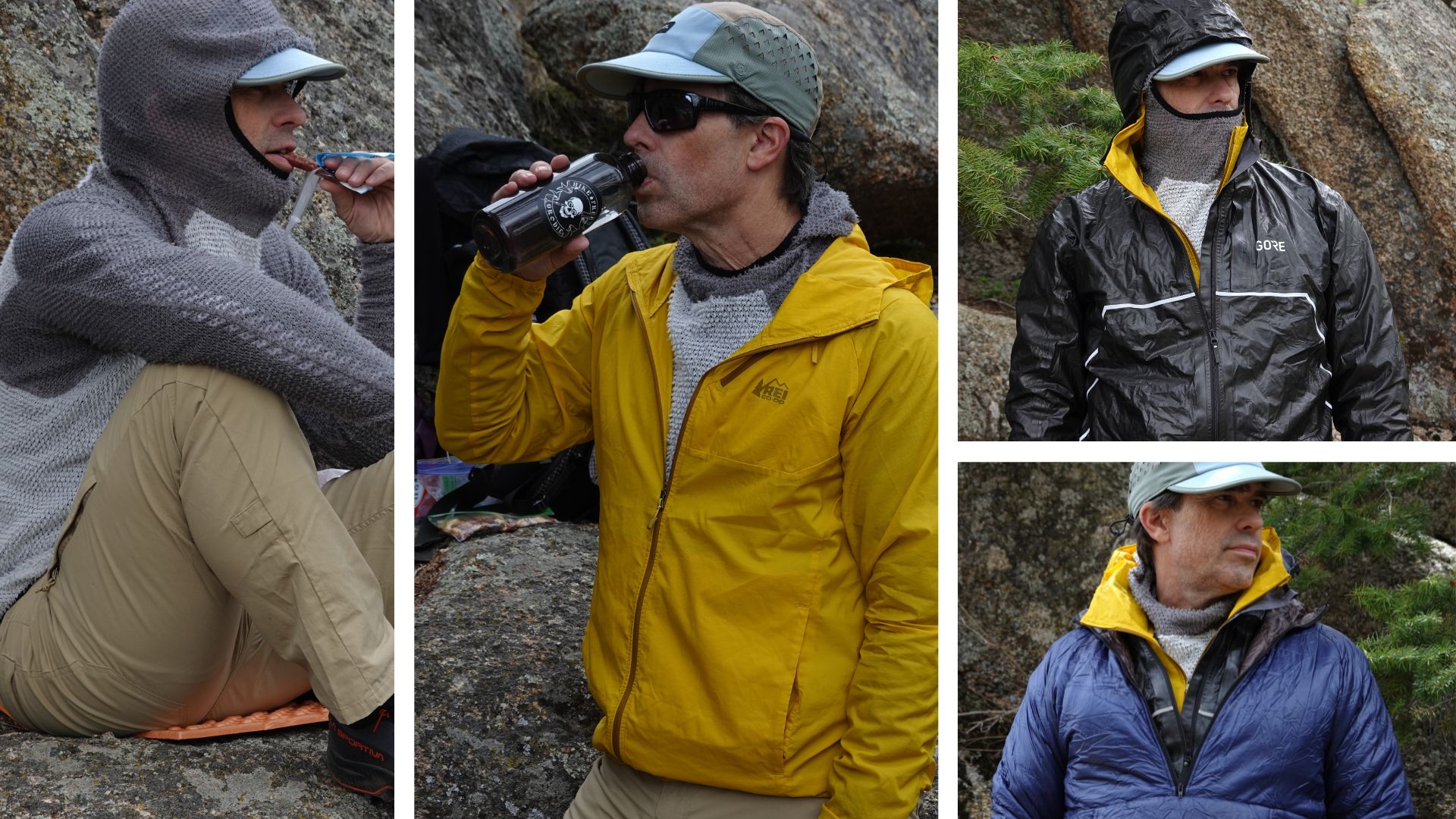
Recommendations: Essential Layers
I’m in the fortunate position as an outdoor industry professional to have a steady influx of “gear to try” without having to shell out thousands of dollars trying to figure it all out. Over the past few years, I’ve made some changes to my layering systems, and the following represents my recommendations for what I think are essential layering pieces that represent a good balance of price, performance, form, function, versatility, and durability. Everyone will gravitate towards garments that appeal to their own aesthetic preferences and performance criteria – consider these as personal recommendations based on my experience, and don’t necessarily assume they will be optimal for your environment or use cases. Share with us in the forums below other layering options and ensembles that you find to be optimal for the use cases you experience.
Active Layers
Brynje of Norway makes both synthetic and merino wool fiber fishnet base layer apparel for outdoor adventures. Fishnet construction is more breathable, lighter, and faster-drying than conventional knits.
An Alpha Direct hoody is an ultralight way to carry fleece that's more comfortable and breathable than a traditional fleece.
- available in both 60g and 90g weights
- very high air permeability for fleece
- when worn under a shell, very high warmth-to-weight ratio
- not as durable as grid fleece or pile
Storm Layers
A full-featured, durable, air-permeable wind jacket.
- one of the lighter full-featured wind jackets on the market
- ventilation features - full zip, adjustable hood and hem
- durable, air-permeable fabric
- hand pockets
- not quite as light as the lightest 7d wind shirts available from cottage brands
A membrane-out rain jacket that requires no DWR for durable water-beading, with one of the highest breathability ratings of any jacket available.
- Intrinsic hydrophobic outer membrane requires no DWR
- 2-way zipper for ventilation
- very high MVTR (breathability)
- designed for slim fit over a base layer, size up 1 size for backpacking
- outer membrane is too fragile for sustained bushwhacking, scrambling, or shoulder strap wear when carrying an expedition-weight backpack
We recommend a synthetic insulated jacket for most conditions where weather is unpredicatable, and the Torrid Apex is one of the best in terms of its warmth-to-weight ratio.
- available in 7d or 10d fabrics
- very high warmth-to-weight ratio for synthetic insulation
- synthetic insulation requires care, not as durable as down
DISCLOSURE (Updated April 9, 2024)
- Product mentions in this article are made by the author with no compensation in return. In addition, Backpacking Light does not accept compensation or donated/discounted products in exchange for product mentions or placements in editorial coverage.
- Some (but not all) of the links in this review may be affiliate links. If you click on one of these links and visit one of our affiliate partners (usually a retailer site), and subsequently place an order with that retailer, we receive a commission on your entire order, which varies between 3% and 15% of the purchase price. Affiliate commissions represent less than 15% of Backpacking Light's gross revenue. More than 70% of our revenue comes from Membership Fees. So if you'd really like to support our work, don't buy gear you don't need - support our consumer advocacy work and become a Member instead.
- Learn more about affiliate commissions, influencer marketing, and our consumer advocacy work by reading our article Stop wasting money on gear.

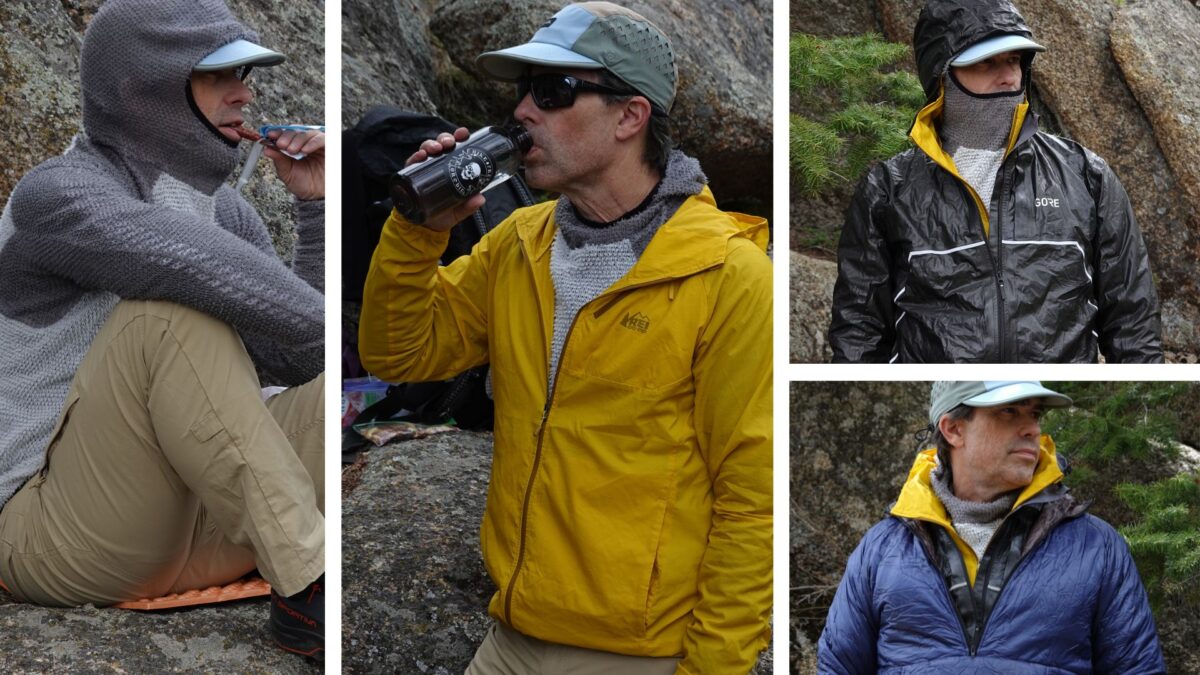
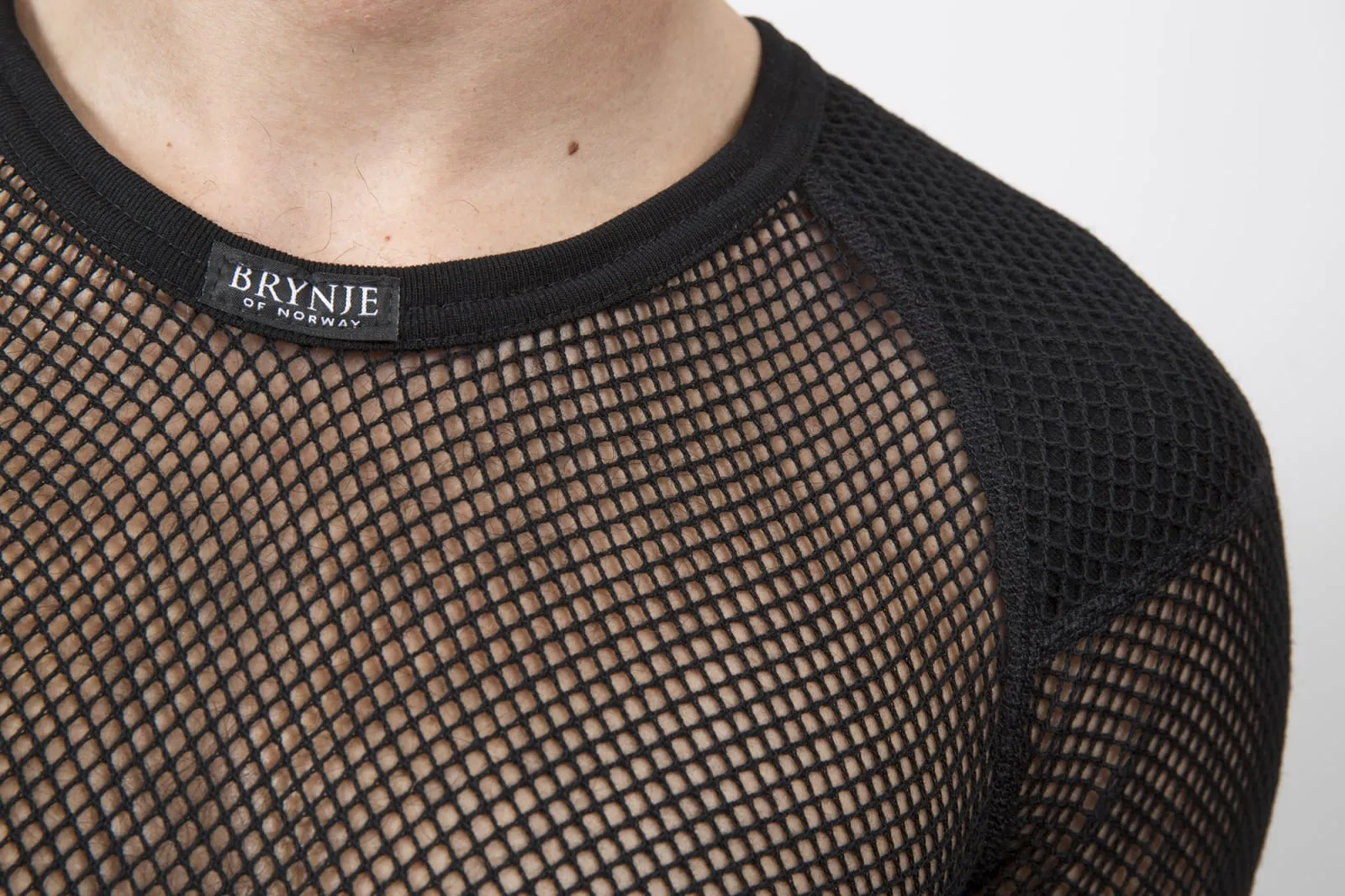

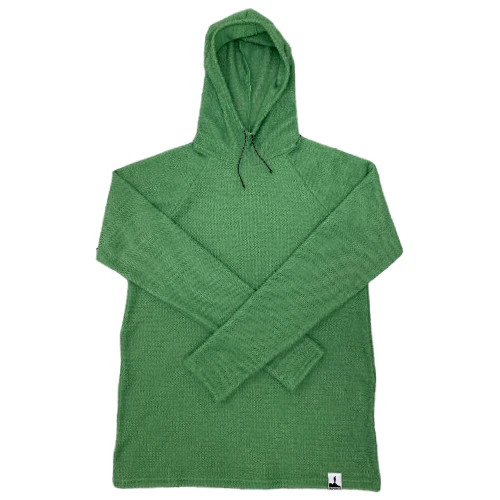

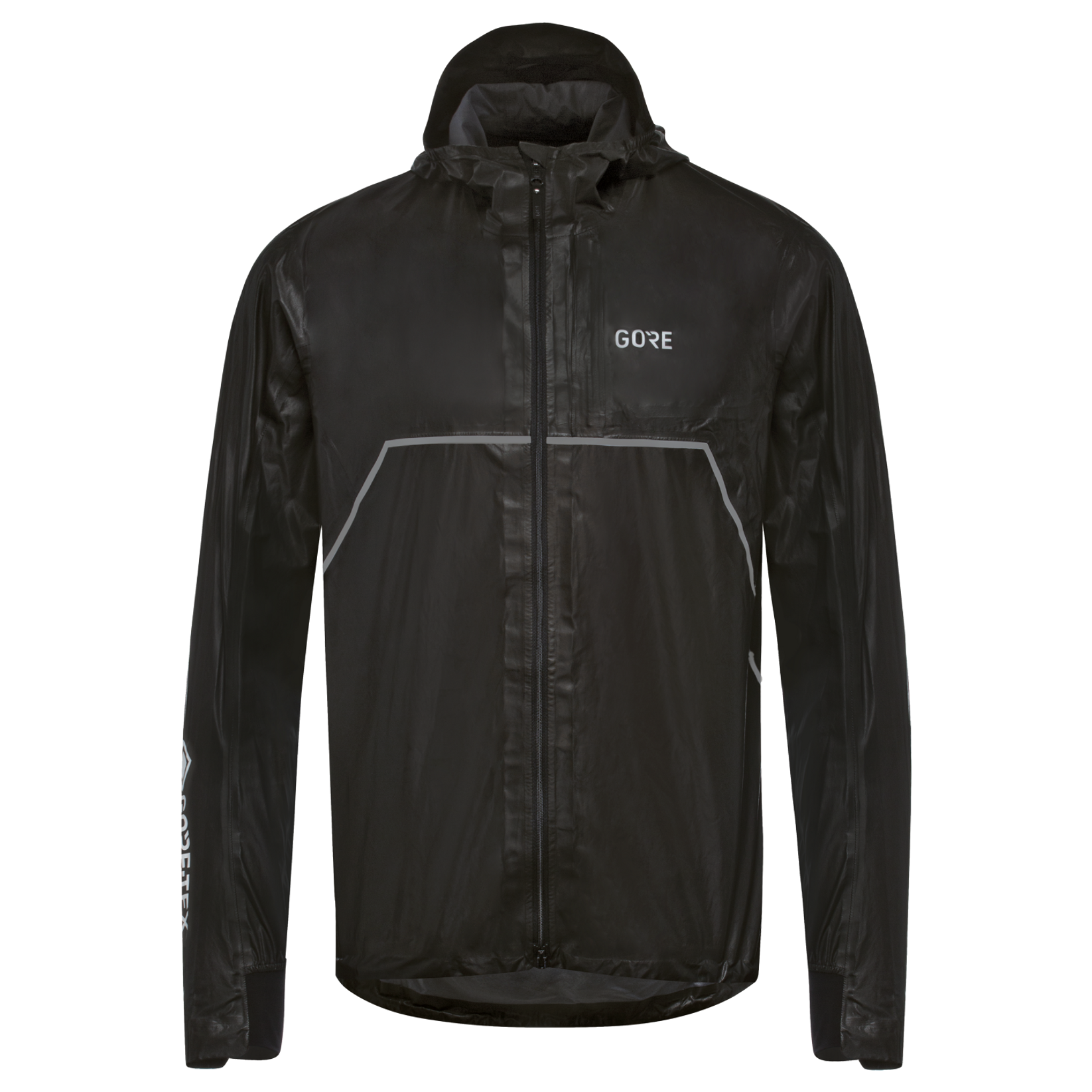



Home › Forums › The Dirt Catwalk: Modern Layering Ensembles for Backpackers